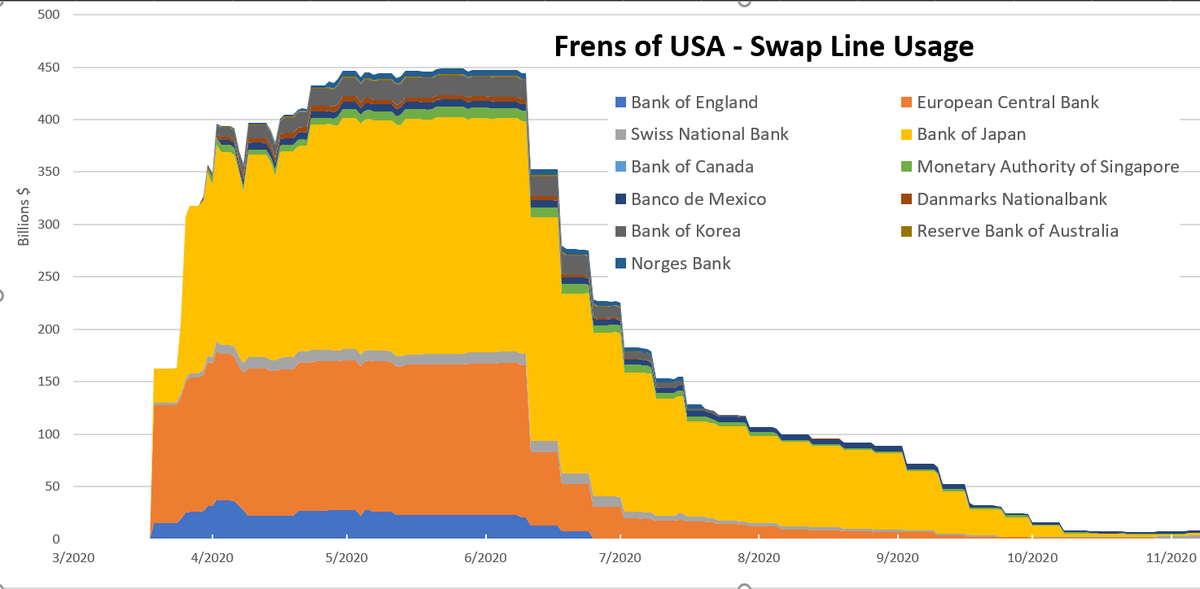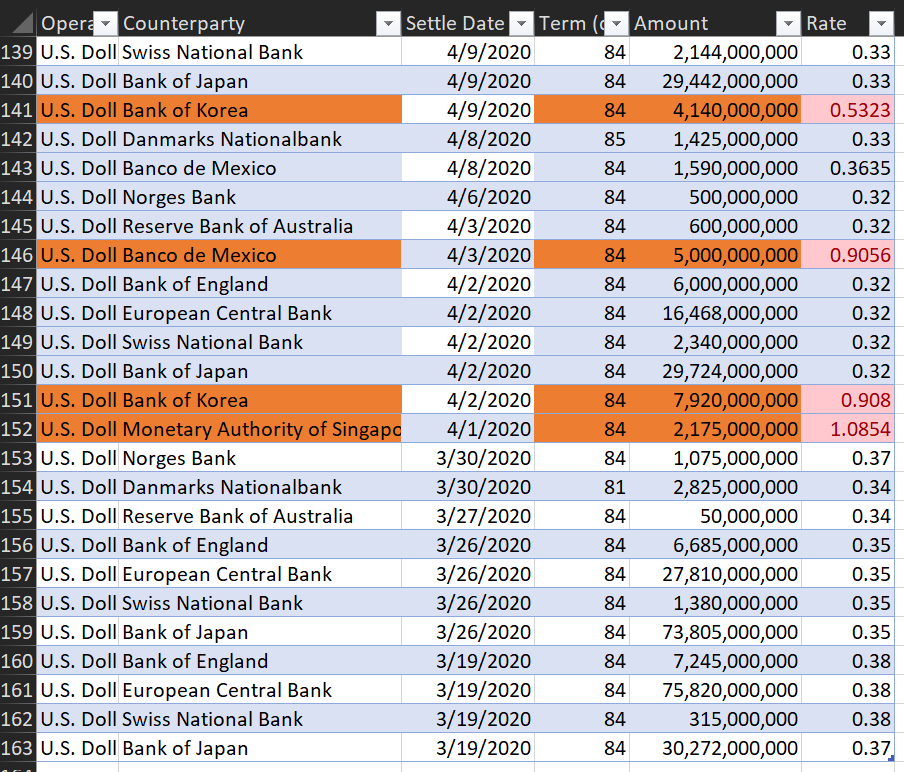2/ Yield curve is a hot topic. I figured a deep dive into the US gov debt maturities would be useful for some. US gov debt is skewed to short term, just like our elected representatives (surprise!).
Chart note: the 2 year bar includes 28 year old 30Y, 3 year old 5Y, so on
Chart note: the 2 year bar includes 28 year old 30Y, 3 year old 5Y, so on
3/ The US has $23T in marketable and $7T in non-marketable debt. Non-marketable includes debt held by the military pension, etc. The US government has *many* liabilities beyond these bills/notes/bonds issued directly by the US government. 

4/ Quasi-gov agencies (Fannie, Freddie, Sallie) also issue debt (implicitly?) guaranteed by feds. In 2008 US took over Fannie/ Freddie. So, real US liabilities are >$30T. @LukeGromen is a top follow on this. 

5/ Side note, total US student loan debt is $1.7T, though not all of that is federally guaranteed. Forgiveness of all student loan debt would pile another $1.7T onto this problem. 

6/ Of the $23T in marketable securities, $2.3T are TiPS or Floating Rate, so I kept them out of my chart to keep things simple.
7/ The US debt ladder is skewed to short duration, as 44% matures within 2 yrs. This $9T must be rolled at massively higher rates. Plus, some portion of the $2.8T annual deficit will be borrowed short term; lets assume 44% of it. How does the gov do this? 

8/ Option A: Pay it off
First, HAHA! No chance
Second, The Treasury General Account has ~$600B in it, and there’s $939B of debt due in Apr 2022 alone. Even the seized Russian currency reserves wouldn’t help us finish out the month.
First, HAHA! No chance
Second, The Treasury General Account has ~$600B in it, and there’s $939B of debt due in Apr 2022 alone. Even the seized Russian currency reserves wouldn’t help us finish out the month.

9/ Option B: issue more short duration bonds. To simplify, lets assume that this was all 1 & 2 year debt issued at about 0.10% and 0.20%. The 1Y is now trading at 1.66% and 2Y at 2.27%. The annual interest on $9T worth of short term debt has increased by ~$155B. 

10/ The DoD annual budget is $750B + some hidden items, so about $811B total. So w/ new interest charges the USA basically just added a second Navy. Or, it added the entire militaries of UK, France and Italy. By the way UK and France are 2 of only 9 nuclear powers. 

11/ $155B in new interest per year matters. That's 10 new Ford class aircraft carriers PER YEAR, which would almost double the existing 11. Although, that's kinda small down there for $13B but whatever. 

12/ But, what if yields keep climbing to close the gap with inflation? If 1Y and 2Y yields return to pre-covid peak of 2.7% and 3.0%, that’s $250B/year of new interest. US corp taxes in FY21 were *only* $238B as a reference. 

13/ Option C: Sell 20Y and 30Y bonds.
The US issued ~$314B of 30Y last year. This was already about 50% jump from pre-covid levels of ~$210B. Even if 30Y 2x'd to $640B, that would only solve a tiny fraction of this $9T problem and could risk long yields spiking to insane levels
The US issued ~$314B of 30Y last year. This was already about 50% jump from pre-covid levels of ~$210B. Even if 30Y 2x'd to $640B, that would only solve a tiny fraction of this $9T problem and could risk long yields spiking to insane levels
14/ Who would buy these potential trillions in new 20Y and 30Ys at any rate under 5% ish? Foreign governments like China and Russia? Pension funds that need to make 8% return to meet promises? Ordinary patriotic citizens buying war bonds like WWII?
15/ The US is forced to refinance at massively higher rates. Why didn’t the US sell more long bonds while rates were low? Well, they did kinda. There's a tiny bump at the 20 year mark in my original chart. This is in part due to US re-opening of 20Y bonds in May 2020. 

16/ The US sold $222B of new 20Ys in 2020, which the market slurped down at 1.12%. But inflation was 2% then.
Bet they wish they had tested the market with a lot more back then at low rates.
Bet they wish they had tested the market with a lot more back then at low rates.

17/ Note: zero bonds maturing btw 11-13 yrs. Either ZERO 30Y were issued in 2003-2006 or the Fed bought them? @timevalueofbtc or @FedGuy12 any idea why there are no bonds of this vintage? Does this allow for a massive auction of 10Y in 2023 without moving rates too much? 

18/ Conclusion: US gov is in a massive debt spiral as it rolls $9T of short debt at high rates that can still go higher to match inflation. Everyone should take steps to protect their finances for what is about to happen. #Bitcoin is great insurance.
@FossGregfoss @RayDalio
@FossGregfoss @RayDalio
19/ The purpose of this thread is to show visually some of the macro issues w/ US debt. I am not a bond trader, nor do I work at the fed, comments appreciated.
@beth_stanton @lynaldencontact @biancoresearch @MetreSteven @JeffSnider_AIP @EmilKalinowski @matthew_pines
@beth_stanton @lynaldencontact @biancoresearch @MetreSteven @JeffSnider_AIP @EmilKalinowski @matthew_pines
PS/ Figured I should tag some troublemakers from the "This is fine" camp so get their take on refinancing $9T at 10x higher rates.
@SantiagoAuFund @EconomPic @cullenroche
@SantiagoAuFund @EconomPic @cullenroche
• • •
Missing some Tweet in this thread? You can try to
force a refresh







